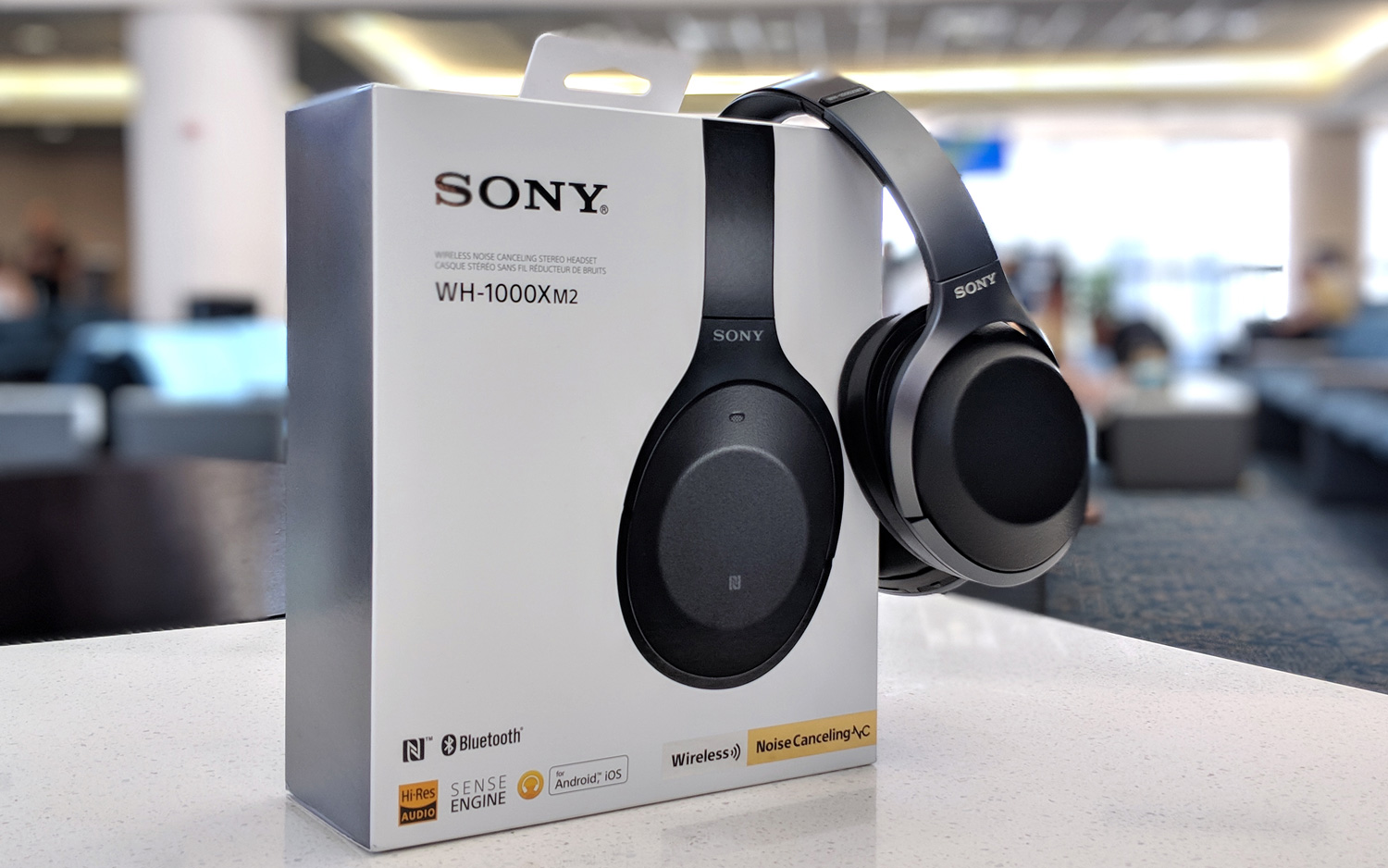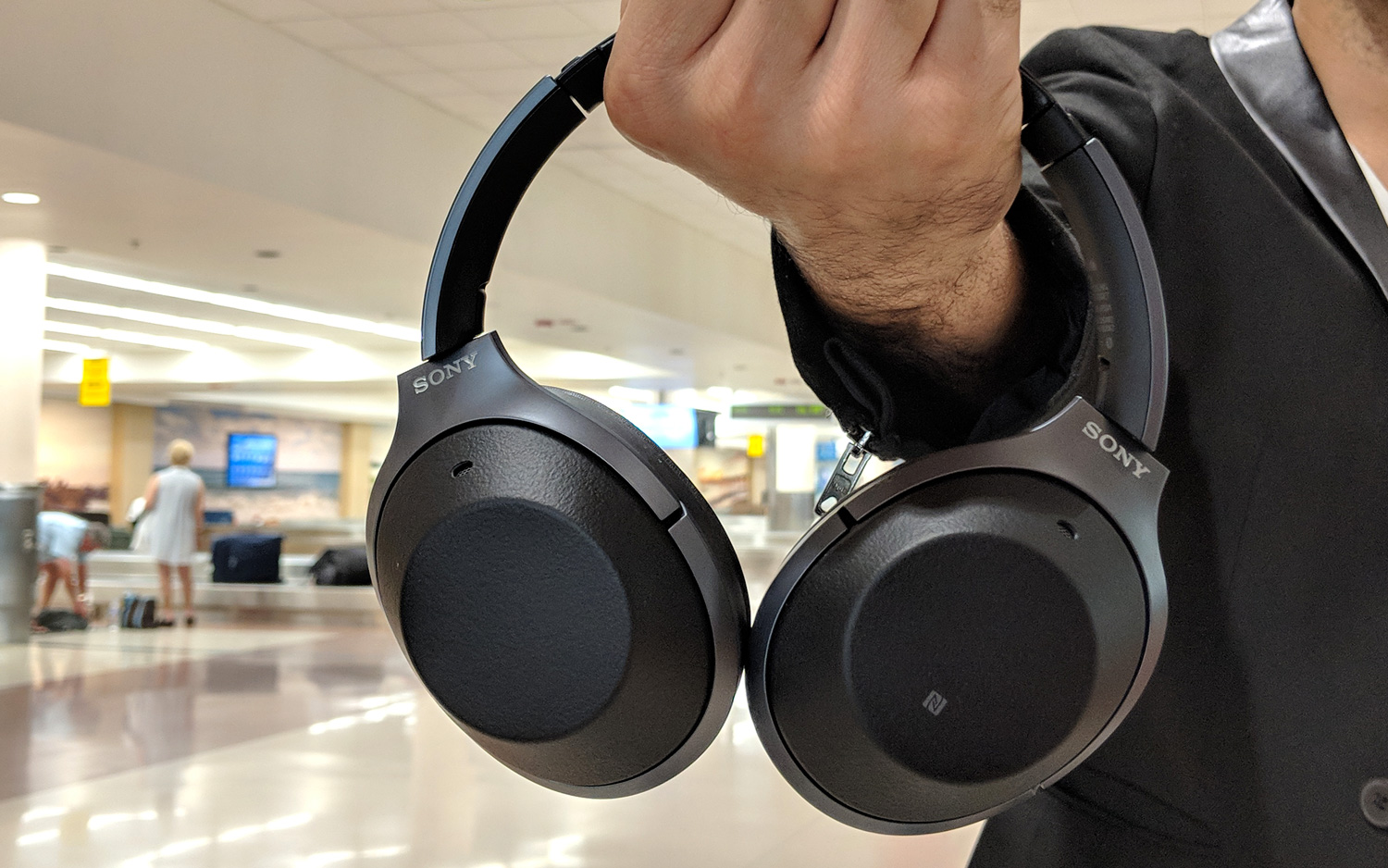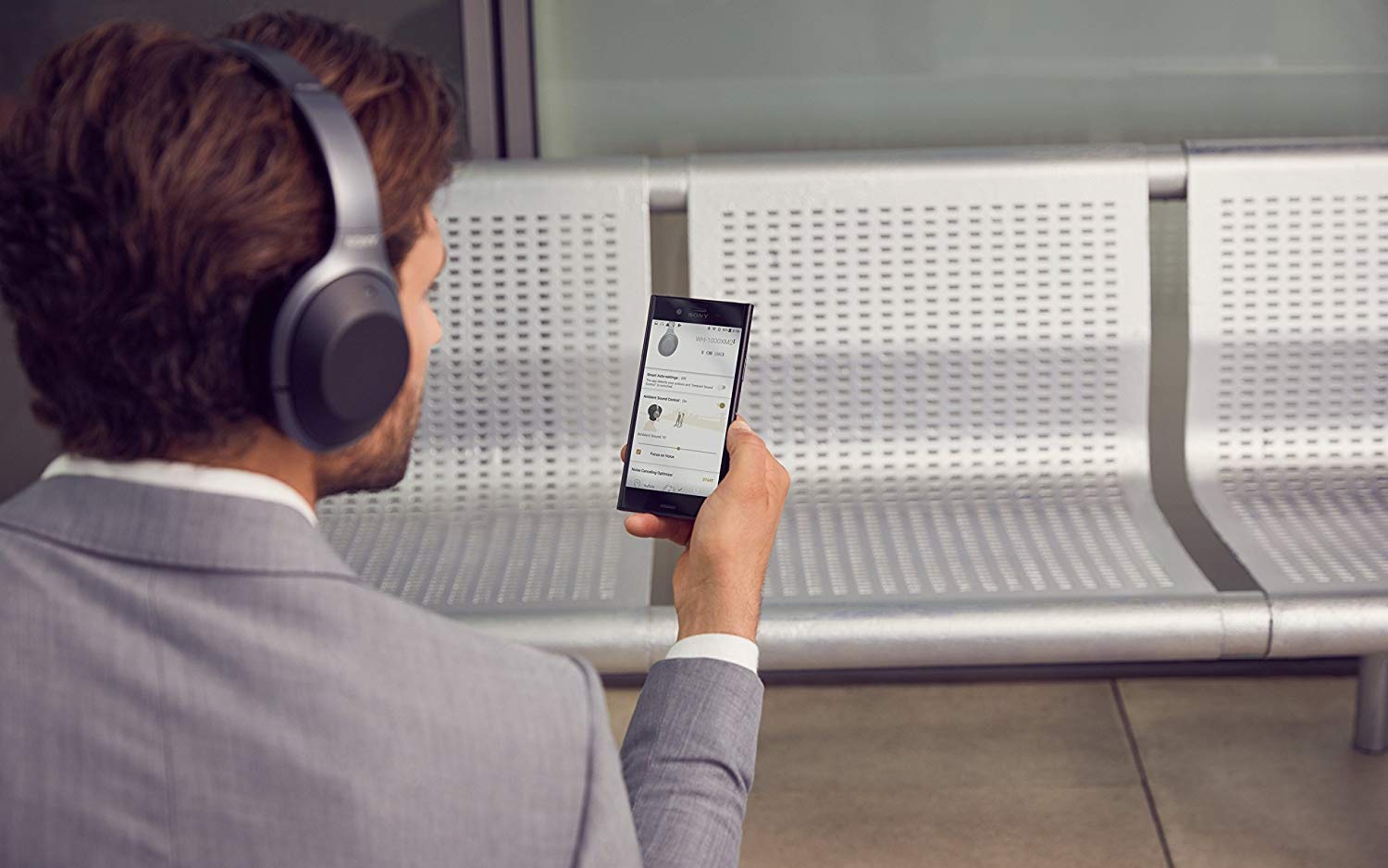Tom's Guide Verdict
A notable upgrade from the original, the Sony WH-1000xM2 is an audio powerhouse with great sound and noise-cancelling performance.
Pros
- +
Amazing sound quality
- +
Solid noise cancellation
- +
Comfy and premium design
- +
30 hours of estimated battery life
- +
Companion app with intelligible features
Cons
- -
On the pricey side
- -
Touch controls can be spotty
Why you can trust Tom's Guide
Active noise-cancelling headphones are growing in popularity right now, and while Bose is the biggest name in the conversation, Sony's also established itself as a giant in the space. That's thanks to products like the $349.99 WH-1000xM2 – an upgrade to the universally acclaimed MDR-1000X.
Backed by a dynamic sound profile, improved noise-cancellation, singular AI features and a sophisticated design, this headphone sequel is ideal for frequent flyers and music lovers who desire atmospheric silence without compromising audio quality. And the Sony's cost about $50 less than the regular price for the Bose QC35 II headphones while providing longer battery life.
Editor’s Note: We’ve recently reviewed Sony's newer MX-1000xM3 headphones, which offers a sleek design, fast charging, 30 hours of battery life, stellar active noise cancelling and great battery life for the same price as its predecessor. See how the Sony MX-1000xM3s held up to its direct competitor, the Bose QuietComfort 35 IIs in our face-off.
Design
Luxury headphones are a Sony specialty, and the WH-1000xM2 is no exception. These cans combine premium materials with sleek aesthetics for a luxe, executive look.
The chic, minimalist design with leathery accents and polished metal construction complements the headphones' business-class charm. The aluminum encasing with reflective-plastic upholstery blends in nicely to create a nice shine factor. Faux-leather material is used on the earcups and the side hinges fold inward for convenient storage. At the top is a steel headband stuffed with polyurethane foam for less compression on the head.

Sony's headphones keep the buttons hidden within the design for a cleaner appearance. On the right earcup is the touch control panel, with the charging port located below. The left side has two raised buttons (Power/Pairing and Noise Cancellation/Ambient) with the audio jack found underneath. Other design elements like the embossed Sony logos and colored left/right symbols above the earcups are a neat touch.
The Sony WH-1000xM2 headphones combine premium materials with sleek aesthetics for a luxe, executive look.
These aren't headphones you'll want to leave unprotected, hence Sony bundled them with a gorgeous leather case to accompany you on trips. The case has ample space to carry the rest of the included accessories like the audio cable and the micro USB cable. Plus, it has a slot in the middle to store an airline adapter plug.
Comfort and Fit
Despite their larger frame and heavier weight (9.7 ounces), these headphones offer the same long-term comfort as Bose's QC35 Series. The plush material and padding on the ear-cups kept my ears cool and free from pressure when rocking them for long periods.

I had these on during a 2-hour conference call and never felt fatigued. The soft-padded headband secured a tight fit to avoid slippage, and the extenders provided enough flexibility to maneuver around in. Connecting the auxiliary cable didn't add any significant weight, either.
The plush material and padding on the earcups kept my ears cool and free from pressure when rocking them for long periods.
Yes, the bulkiness of the WH-1000xM2 might persuade you to travel lighter, but don't feel discouraged thinking you need to clear out extra space in your luggage. These headphones are compact and portable enough to carry in your hand, pack in any bag or wear around the neck.
Touch Controls
These headphones support several finger-swipe and tap gestures to control functionality. Swiping right/left lets you skip or play a previous track, while swiping up and down manages volume levels. Double-tapping the panel will play/pause media. On occasion, I did notice some lag with the touch panel and physical buttons, mainly in noise-cancelling mode, for some odd reason.

As intuitive as the control panel was, Sony forgot to account for one thing: a wired connection. The touch controls don't work when using the auxiliary cable. If the touch panel malfunctions, users can only access the controls through their paired device. The headphones only come with a one-year warranty as well.
Active Noise Cancelling
Sony spared no expense with its noise-cancelling technology, integrating four mics – one on the inside and outside of each earcup – to deliver the same reliable noise neutralization as its predecessor. On a 4-hour flight, the NC mode served its purpose by silencing the ambient noise around me from the newborn in the opposite row to the talkative couple in front. Taking these into a crowded coffee shop also helped dial down the chatter of caffeinated locals.

Ambient mode was just as impressive, directing external audio from my surroundings into the headphones without lowering the volume. I found the option most useful when communicating with stewardesses and listening to boarding announcements at my gate. This isn't a feature afforded to Bose listeners, so Sony earns brownie points in my book.
On a 4-hour flight, the noise cancelling silenced the ambient noise around me, from the newborn in the opposite row to the talkative couple in front.
Although the WH-1000xM2 was capable of drowning out a lot of noise, the technology struggled with wind. The outside mics were sensitive to passing air, and produced clatter. Leakage was also noticeable at high volumes, as my girlfriend noted when I interrupted her nap in flight. These are common issues found in most noise-cancelling headphones, though I anticipated these cans would perform at the same level as the QC35 II.
Audio Performance
I tested the WH-1000xM2 across popular music genres from classic rock to hip-hop. The headphones produced great audio across the board, showcasing a neutral profile focused more on mids and highs, while embracing Sony's boom-tastic sound signature.
A masterpiece like Michael Jackson's "Thriller" was the perfect sonic backdrop for these headphones. They distinctly captured the percussive elements of "Wanna Be Startin' Somethin,'" leaving my rhythmic senses stimulated by the compelling synths and complex drum pattern of the opening track. "Human Nature" gave life to the singer's breathy vocals, whereas the autotuned ad-libs on "Baby Be Mine" represented the mids extremely well. The QC35 II was identical in comparison.

Sony's never been one to skimp on bass, and records like Green Day's "Longview" demonstrated this. The low response was powerful and sent waves through my ears. I was able to even listen comfortably at max volume, distortion-free. Then I jumped into The Doors' "Love Me Two Times," where there was good depth in the midrange as Jim Morrison's baritone voice stole the spotlight.
MORE: 7 Cheap Noise-Canceling Headphones (Under $200)
The headphones support aptX HD and Sony's proprietary sound technologies (LDAC, DSEE HX and S-Master HX). Each is engineered to improve sound quality by upscaling compressed audio to a higher resolution. Streaming music on an Android device running Oreo (8.0) sounded awesome. You won't find these sound-processing features on the QC35 II.
Throwing the auxiliary cable into the mix bumped up the sound, but with mixed results. Highs were noticeably better, and vocals sounded brighter, especially when hearing live recordings. Lows were increased and dominated the entire soundscape, but records with heavy bass sounded crisper on the QC35 II.
Connect App
The free Connect app (Android, iOS) does more than extend functionality to your mobile device – it customizes the listening experience through adaptive features. There are plenty of in-depth sound-optimization settings to tune the soundscape to your liking.

Sound Position Control was the coolest function, letting me control the direction of music from five different vantage points. I designated most of the sound output to the right side of the headphones, to drown out passengers barging down the aircraft aisle. And it worked. The NC Optimizer was another unique feature that measured the atmospheric pressure around me to marginally enhance noise-cancelling.
Other EQ settings are available to toy with for personalized sound like virtual surround sound, with features for modes – Arena, Club, Concert Hall, and Outdoor Stage – programmed to re-enact those respective listening spaces. Audiophiles have a lot of options to play with.
Google Assistant
Digital assistants are currently the "it" feature on audio products, and the WH-1000xM2 embraces the trend. Google Assistant operates just as good on the WH-1000xM2as it does on the QC35 II. Plus, it feels more streamlined than on sub-luxury headphones like the JBL Everest 710GA.
MORE: Best Gadgets with Google Assistant
Basic actions like speech-to-text and weather updates operated flawlessly thanks to the built-in mics accurately hearing every command I threw at them. I noticed the software was a bit more intuitive on these cans, letting me confirm commands vocally rather than pressing a button, which worked better for me. Do note that you're required to turn off Google Assistant to use the listening modes and vice versa.
Battery Life
Sony's noise-cancellers have the competition beat with up to 30 hours of battery life. That's 10 hours more of wireless listening than the QC35 II. I used these headphones 8 hours daily, which translated to 3.5 days before they needed a recharge. Skype calls, Spotify and several commutes into the city were accounted for.
The WH-1000xM2 supports quick charging to provide 70 minutes of play on a 10-minute charge. This was clutch when waiting on my Uber to the airport. Sony also programmed its noise-cancelling mode to turn off after 5 minutes, conserving juice when not in use.
Call Quality
Call quality was satisfying for the most part. My vocals were so clear that people were convinced I was talking on a handset. Chatting with my girlfriend on Ambient and Noise-Cancelling modes made calls clearer on my end, but that was mainly in quiet settings like my bedroom. She could hear the centralized air conditioning and any raucous roommates once I stepped into my living room. The QC35 II was more reliable for wireless calls.
Bluetooth, NFC and Setup
I had no issues pairing the WH-1000xM2 cans with multiple devices. Streaming music from my smartphone was smooth when roaming around my house, plus I liked that the headphones always pulled up the last song played on my Google Play account when connected. Skittering around the max range (30 feet) caused occasional dropout, but that's typical for most Bluetooth 4.1 devices.

NFC seems more like a novelty these days than a necessity, but it does offer one timely benefit – faster pairing. You can connect any NFC-compatible smartphone to these cans by tapping it on the left earcup, but only with Bluetooth enabled on both devices. Even with a thick protection case covering my phone, I established an instant connection.
MORE: Best Noise-Cancelling Headphones
Those more partial to the traditional pairing setup can still get the headphones up and running without a hitch. Hold the power button for 7 seconds to enable Pairing Mode. Enter your laptop or your smartphone's Bluetooth settings, select the Pair New Device menu, and choose "WH-1000XM2" from the list.
Bottom Line
The Sony WH-1000xM2 headphones are definitely a category leader, with top-notch active noise-cancellation to match its intelligible features and stellar soundstage. Upgrades to the mids and highs, along with the vast number of audio-customization settings in the Connect app, create an immersive listening experience you can enjoy in almost any environment.
All great things considered, I still place the QC35 II atop the ANC throne based on certain performance aspects. The touch controls on the WH-1000xM2 can use some tweaking, and the wind sensitivity of the mics holds back the noise cancellation from being near-perfect. Still, if you want a slightly cheaper alternative to the best noise-cancelling headphones on the market, the WH-1000xM2 is an excellent choice.
Credit: Regan Coule/Tom's Guide
A lifestyle journalist with an affinity for consumer products, Alex has over a decade of experience and has worked with popular publications such as Complex, Thrillist, Men’s Health, Gear Patrol, AskMen, and Hoop Magazine. He currently focuses on audio, reviewing the most coveted headphones in the market for both Tom’s Guide and Laptop Magazine.
-
dexdwalker I bought these headsets a few months ago and love them. I will not go to the gym without my headsets. I can't wait until I can use them on my flight next week.Reply -
joeyluu The wind noted in this review can easily be drown via the Sony Connect app and it works brilliantly.Reply -
saltywalnut Not noted in this review is the ability to temporarily enter ambient noise mode by covering the right earcup. Very useful for quick interruptions.Reply


